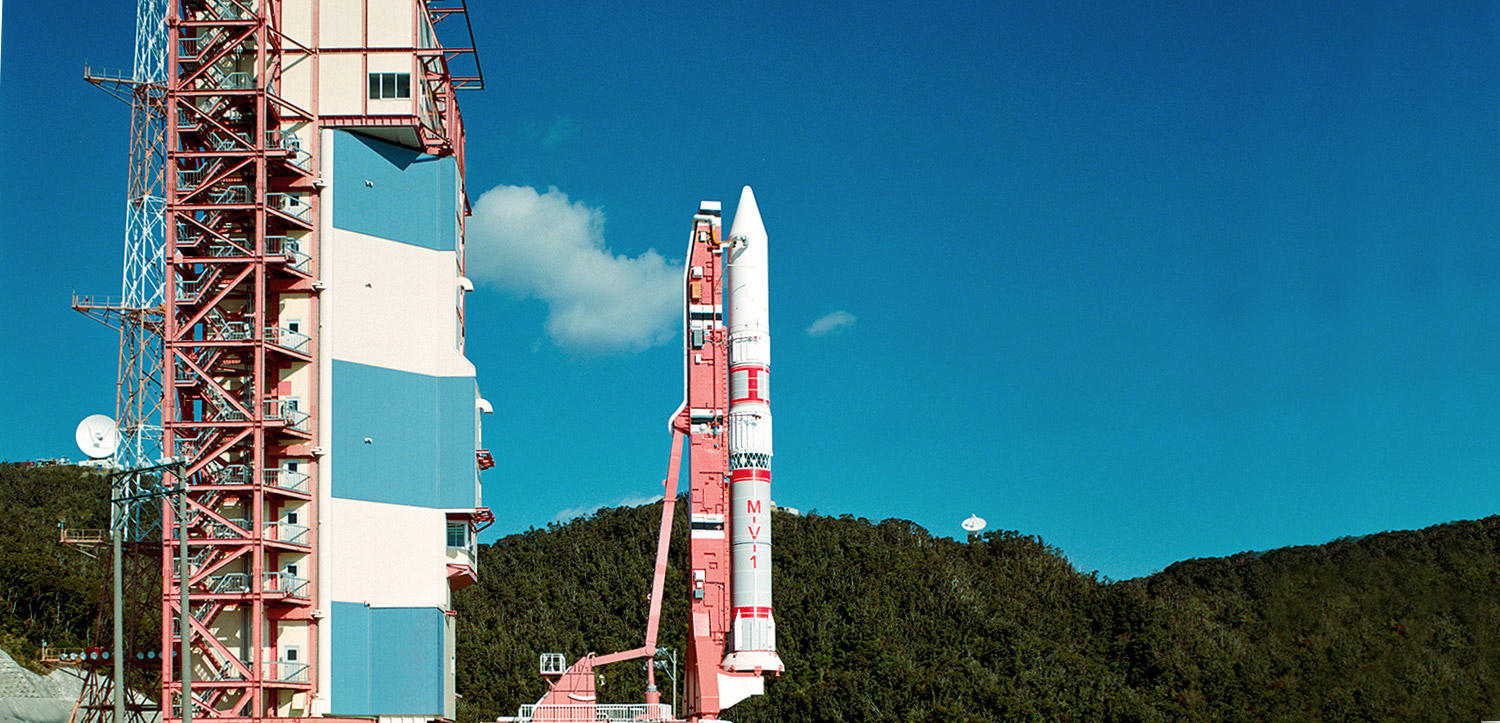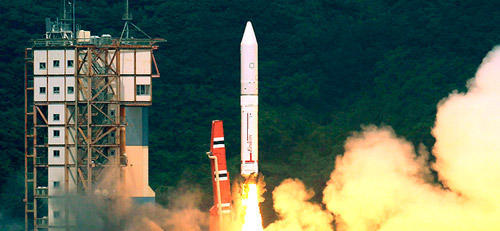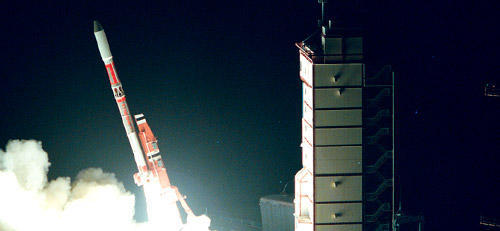M-V rockets opened a new era in Japan's space development.
The former ISAS (currently ISAS of JAXA) keenly observed space phenomena including supernovae, aurorae and Halley's Comet, making full use of the M (Mu) rocket series developed to launch scientific satellites. As a result, ISAS is now renowned as one of the world's most important space science bases.
To meet the expected increase in demand for space science in the 21st century, the M-3SII series (the fourth generation of M rockets) which played a vital role for more than 10 years, were replaced by their successors, the M-V rockets. M-V rockets are a substantially improved version based on technologies developed and nurtured on M rockets. Although the M-V-4 failed to put ASTRO-E satellite into orbit (the only failure among seven M-V missions), M-V rockets were successful in putting four astronomical observation satellites and two planetary explorers into their planned orbits, opening the door to a new era for solar system science to visit and explore planets.
For their role in successful missions including planetary explorations, M-V rockets were highly praised as “the best solid-propellant rockets in the world.EHowever, after the launch of M-V-7 in September 2006, production of the M-V series was discontinued for various reasons.
The design guidelines for the M-V rocket are listed below:
To provide launch capability for space science programs in late 1990s and early 21st century,
To take advantage of simplicity and low cost of solid propellant rockets for medium size payloads,
To refine and upgrade the technology for solid propellant satellite launcher,
To use Kagoshima Space Center (KSC) with its range of safety regulations as the launch site,
To make use of existing ground support facilities at KSC,
To keep costs at a level which enables annual launches.
The main aims of new technology in the M-V are listed below:
HT-230M high-strength steel for the first and second stage motor cases,
Interstage structure between 1st and 2nd stages corresponds to FIH (fire in the hole) separation system,
CFRP motor cases for the third and kick stages to realize lighter weight,
extendable nozzles for the third and kick stages,
nose fairing opening mechanism, and FOG (fiber optical gyro) to sense vehicle attitude.
M-V Launch Vehicle Missions
| Launch Date | Mission |
|---|---|
| 2006.9.23 | Solar Observation HINODE |
| 2006.2.22 | Infrared Astronomy AKARI |
| 2005.7.10 | X-ray Astronomy SUZAKU |
| 2003.5.9 | Asteroid Explorer HAYABUSA |
| 1998.7.4 | Mars Explorer NOZOMI |
| 1997.2.12 | Radio Astronomy HALCA |



